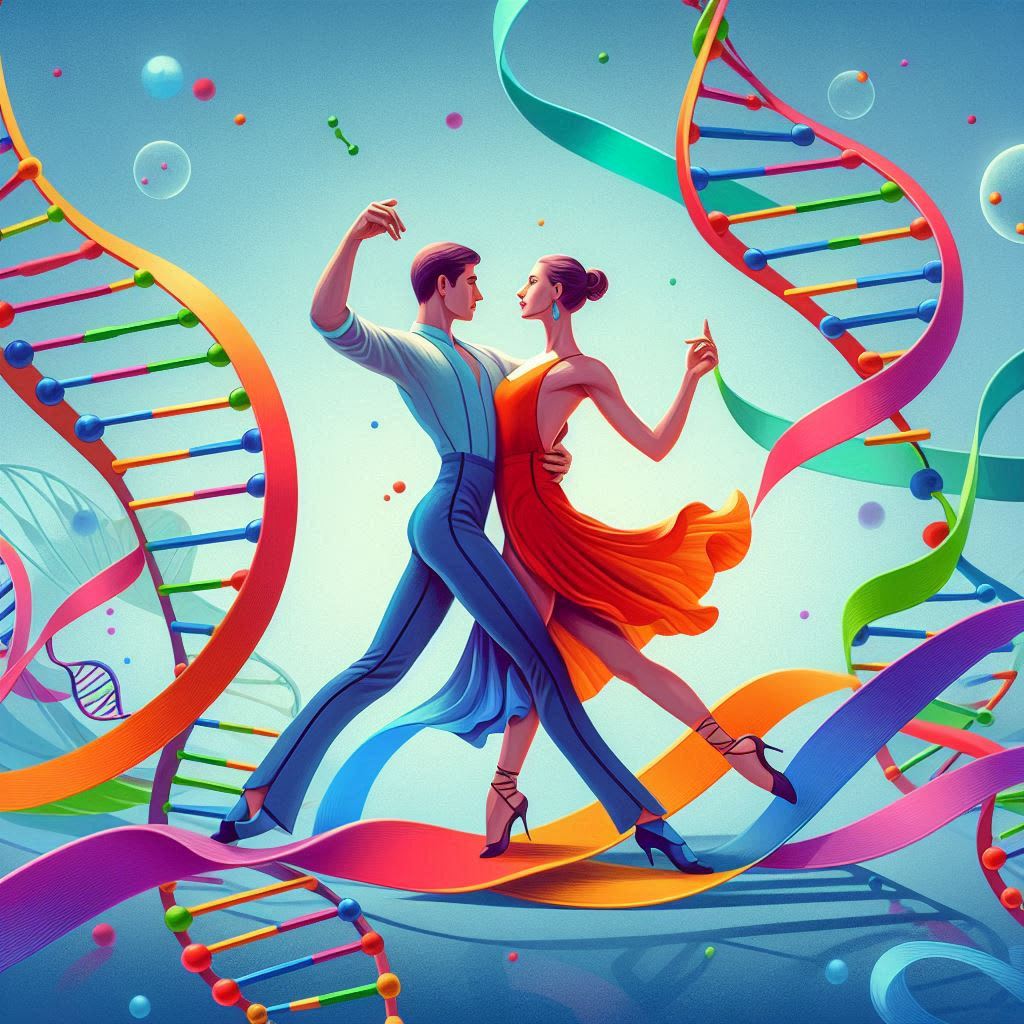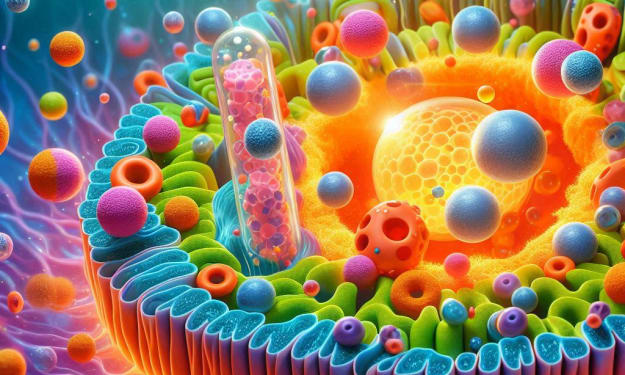The Double Helix Tango: Unveiling the Cellular Dance of DNA Replication
A Journey into the Precise Copying Mechanism that Shapes Life

Have you ever wondered how a single fertilized egg transforms into a complex organism like yourself, with trillions of unique cells? The answer lies in a meticulously choreographed dance called DNA replication. This fascinating process ensures our genetic blueprint, stored in the form of DNA, is faithfully copied so each new cell inherits the instructions for life.
But why is this so crucial? Imagine a baker needing to replicate a perfect copy of their prized pie recipe for every customer. Faulty instructions (mutations) could lead to disastrous results, like a savory pie tasting sweet! Similarly, errors during DNA replication can have severe consequences for our health.
The Blueprint of Life: Decoding DNA Structure
Before diving into the replication process, let's understand the structure of DNA, the molecule that holds the code for life. DNA resembles a twisted ladder called a double helix. The rungs of this ladder are made of pairs of chemical compounds called nucleotides. Each nucleotide has three parts: a sugar molecule (deoxyribose sugar in DNA), a phosphate group, and a nitrogenous base. There are four types of bases: adenine (A), guanine (G), cytosine (C), and thymine (T). The magic lies in how these bases pair up – A always bonds with T, and C always with G. This specific pairing allows the two strands of DNA to store and transmit information.
The Replication Tango: A Three-Act Play
DNA replication unfolds in three elegant steps: initiation, elongation, and termination.
Act I: Initiation - Setting the Stage
The process begins at specific points on the DNA strand called origins of replication. Here, initiator proteins gather, acting as stage managers, to recruit a team of enzymes needed for copying. This team forms a "replication complex" around the origin, ready for action.
One key player is DNA helicase, an enzyme that acts like a skilled zip-opener. It pries apart the double helix, exposing the two individual strands. Now, each strand serves as a template for creating a new complementary strand.
Another crucial enzyme, DNA primase, steps in like a prompter. It synthesizes short RNA primers, which act as starting points for DNA polymerase, the star of the show. DNA polymerase, the tireless copier, meticulously adds new nucleotides to the growing DNA strand, ensuring it faithfully matches the template.
Act II: Elongation - The Copying Begins
With the stage set and the actors in place, DNA polymerase takes center stage. It can only add nucleotides to the 3' (three prime) end of the growing strand. Imagine a writer who can only add words to the end of a sentence! This creates a challenge:
- Leading Strand: One strand, called the leading strand, is copied continuously as DNA polymerase reads the template in the 3' to 5' direction and synthesizes the new strand in the 5' to 3' direction.
- Lagging Strand: The other strand, the lagging strand, poses a problem. It runs in the opposite direction (5' to 3'). If DNA polymerase tried to copy it continuously, it would be adding nucleotides to the wrong end! To overcome this hurdle, DNA primase lays down short RNA primers at intervals along the lagging strand. DNA polymerase then works on these primers, creating short DNA fragments called Okazaki fragments, in the 5' to 3' direction, just like with the leading strand.
Act III: Termination - The Grand Finale
As the replication forks (the points where the DNA strands are separated) move along the DNA, they eventually meet and replication comes to an end. Enzymes then step in to remove the RNA primers from the lagging strand and stitch the Okazaki fragments together, forming a complete new DNA molecule.
The Impact: When the Dance Goes Wrong
DNA replication is a marvel of cellular machinery, but sometimes errors can occur. These errors, called mutations, can be caused by environmental factors like radiation or simply mistakes during the copying process.
- Silent Mutations: Some mutations might be silent, having no noticeable effect.
- Disastrous Consequences: However, other mutations can alter the protein coded by the gene, leading to diseases like sickle cell anemia. In this condition, a single base change in the DNA coding for hemoglobin results in misshapen red blood cells that can block blood vessels, causing severe pain and organ damage.
The Future: Beyond the Basics
Scientists are constantly unraveling the mysteries of DNA replication. Research is ongoing to understand how the process is tightly regulated to ensure accuracy and how it can be manipulated to treat diseases caused by faulty DNA replication. Additionally, the potential applications of this knowledge extend to areas like regenerative medicine, where scientists aim to use stem cells to repair damaged tissues.
In Conclusion
The cellular dance of DNA replication is a testament to the remarkable efficiency and precision of life's machinery. It's a process as awe-inspiring as it is crucial, ensuring the continuity of life and the intricate dance of inheritance across generations. By understanding the intricacies of this dance, we unlock the potential to not only safeguard our own health but also explore groundbreaking avenues in medicine and our understanding of the human body.
About the Creator
suren arju
Hi there! I'm Suren, your startup guide. Entrepreneur, writer, dreamer - I share insights, tips & stories to fuel your startup journey. Ready to explore, learn & win together? Join me & let's redefine how we launch, learn & leap!
Enjoyed the story? Support the Creator.
Subscribe for free to receive all their stories in your feed. You could also pledge your support or give them a one-off tip, letting them know you appreciate their work.





Comments
There are no comments for this story
Be the first to respond and start the conversation.